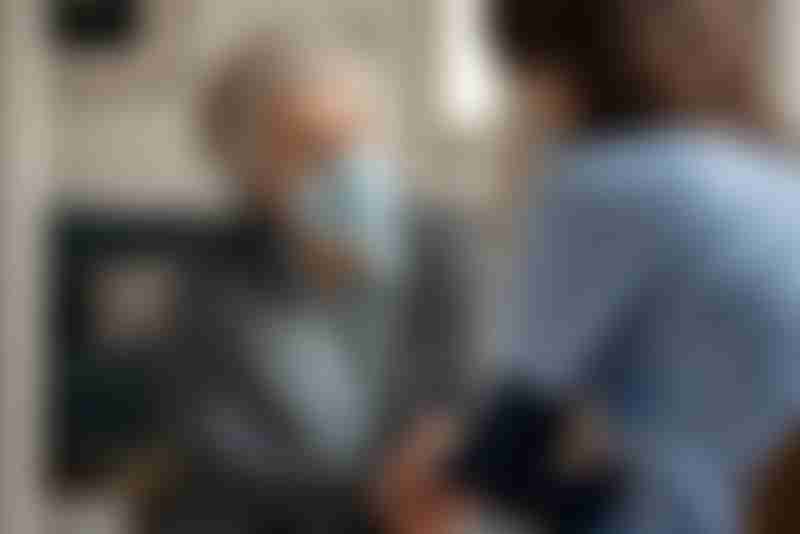Getting a Breast Biopsy: Why It Is Necessary

Source: Shutterstock
A breast biopsy can be a scary procedure for many. This diagnostic procedure involves taking a small sample of breast tissue or cells. A pathologist then examines them under a microscope.
Unfortunately, if there is a suspicious finding in your breast, a biopsy is normally necessary to determine the presence of breast cancer. This examination determines the presence of cancerous cells, the type and characteristics of the cancer. This is essential for developing an appropriate treatment plan.
Facing the possibility of a biopsy can understandably be daunting. However, try to think of a biopsy as a step towards clarity and a source of necessary information for your healthcare team.
With this, you will be in a better position to make informed decisions. Your doctors will also be able to address any potential concerns early on. This proactive approach can also lead to more effective treatments and positive outcomes. A tissue biopsy is essential for several reasons.
Confirming the diagnosis
A biopsy is the only way to confirm whether a breast abnormality is cancerous or non-cancerous.
Determining the type of breast cancer
Different types of breast cancer have their own characteristics and treatment options. Biopsy results help identify the specific type of breast cancer, which guides the appropriate treatment approach.
Staging the cancer
If breast cancer is confirmed, a tissue biopsy of an abnormal-appearing lymph node or an abnormal mass elsewhere in the body helps determine the stage of the cancer. This indicates the size of the tumor and whether it has spread to nearby lymph nodes or other parts of the body. Staging is essential for developing the best and most appropriate treatment plan.
Treatment planning
Tissue biopsy results are crucial for determining the most appropriate treatment options based on the breast cancer type and stage. Treatment options may include surgery, radiation therapy, chemotherapy, hormone therapy, or targeted therapy.
Prognosis and follow-up
Biopsy results, including cancer grade and Ki-67 level, when available, also provide information about the aggressiveness of the cancer, which can help predict the prognosis and plan for long-term follow-up and monitoring.
Types of breast biopsies
Fortunately, there are several types of breast biopsies used to obtain tissue samples for further examination and diagnosis, some of which are less extensive and invasive than others. The choice of biopsy method depends on factors such as the size and location of the breast abnormality, and individual patient factors.
Fine needle aspiration (FNA)

Fine needle aspiration of the breast. Adapted from: Shutterstock
In an FNA biopsy, a thin needle is used to withdraw cells or fluid from the breast lump or abnormal area. This type of biopsy is often used for easily accessible lumps or cysts. FNA can help determine whether the lump is filled with fluid (benign) or solid (potentially cancerous).
If an FNA is done and the patient is determined to have cancer, a core needle biopsy may need to be done to run additional tests to determine the cancer type. FNAs are also done to check if cancer is present in an enlarged lymph node.
Core needle biopsy
Core needle biopsy is a more extensive procedure that uses a larger needle to remove small tissue cores from the breast lump or suspicious area. It provides more tissue for analysis, making it more accurate in diagnosing breast cancer, including breast cancer type.
Surgical biopsy
Surgical biopsies involve the removal of a larger portion or the entire breast lump or abnormal area through a minor surgical procedure. Two main types of surgical biopsies include:
- Incisional biopsy
A portion of the lump is removed for examination.
- Excisional biopsy
The entire lump or abnormal area is removed for evaluation.
Lymph node biopsy
This biopsy is done to check whether cancer has spread to the nearby lymph nodes. It is often an FNA when the cancer is first diagnosed. A sentinel lymph node biopsy is when the sentinel lymph node, the first lymph node in the axilla or armpit to which cancer is likely to spread, is removed as part of surgery to remove the breast cancer.
What type of breast biopsy will I get?
Your healthcare provider determines the choice of biopsy method based on individual circumstances and risk factors. The goal is to obtain sufficient tissue samples to provide an accurate diagnosis while minimizing invasiveness and preserving breast function and appearance. Another goal is to minimize side-effects as a result of lymph node biopsy or removal.
It is essential to discuss the biopsy procedure with your healthcare provider and understand the reasons for the recommended method. Ask them to address any concerns or questions you may have.
It's important to remember most breast abnormalities are not cancerous, and that most biopsies confirm benign (non-cancerous) conditions. Nonetheless, early cancer detection and accurate diagnosis are crucial for the timely and appropriate management of breast health concerns.
Remember that while a breast biopsy may be emotionally challenging, it is a vital step in obtaining an accurate diagnosis and determining the most appropriate treatment, if needed. Acknowledging and addressing your feelings during this time is crucial. Surround yourself with supportive individuals, communicate openly with your healthcare team, and seek emotional support as needed. Breast cancer treatment and survivorship can also involve emotional aspects, and accessing appropriate support throughout your journey is essential for your overall well-being.